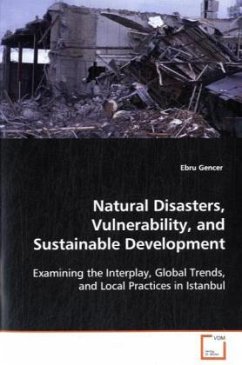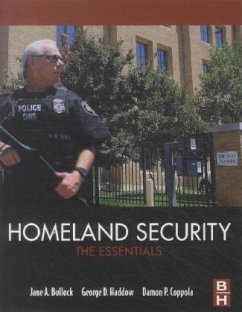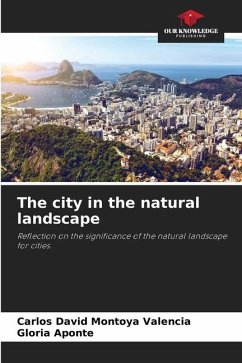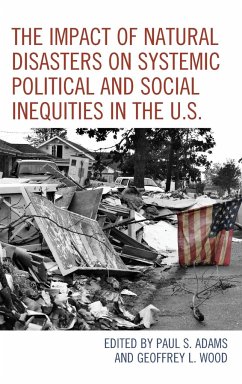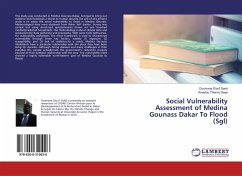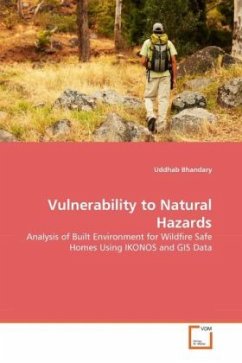
Vulnerability to Natural Hazards
Analysis of Built Environment for Wildfire Safe Homes Using IKONOS and GIS Data
Versandkostenfrei!
Versandfertig in 6-10 Tagen
45,99 €
inkl. MwSt.

PAYBACK Punkte
23 °P sammeln!
This book discusses vulnerability to natural hazards, method of evaluating vulnerability to natural hazards, and finally evaluation of risk factors that influence the probability that a house will burn from wildfire. A logistic regression is used to analyze data processed from pre-fire and post-fire IKONOS images and other geo-referenced data. The dependent variable is the probability that a given house will burn. A total of 12 independent variables are evaluated: vegetation density; area of defensible space; adjacency of a parcel to public lands; proximity of a house to fire station; road wid...
This book discusses vulnerability to natural hazards, method of evaluating vulnerability to natural hazards, and finally evaluation of risk factors that influence the probability that a house will burn from wildfire. A logistic regression is used to analyze data processed from pre-fire and post-fire IKONOS images and other geo-referenced data. The dependent variable is the probability that a given house will burn. A total of 12 independent variables are evaluated: vegetation density; area of defensible space; adjacency of a parcel to public lands; proximity of a house to fire station; road width; road type; parcel size; subdivision morphology; assessed value; elevation; slope and aspect. Model results generally support dominant measures and strategies for wildfire risk reduction including vegetation treatments, site selection with respect to topography, and improving access to fire stations.




